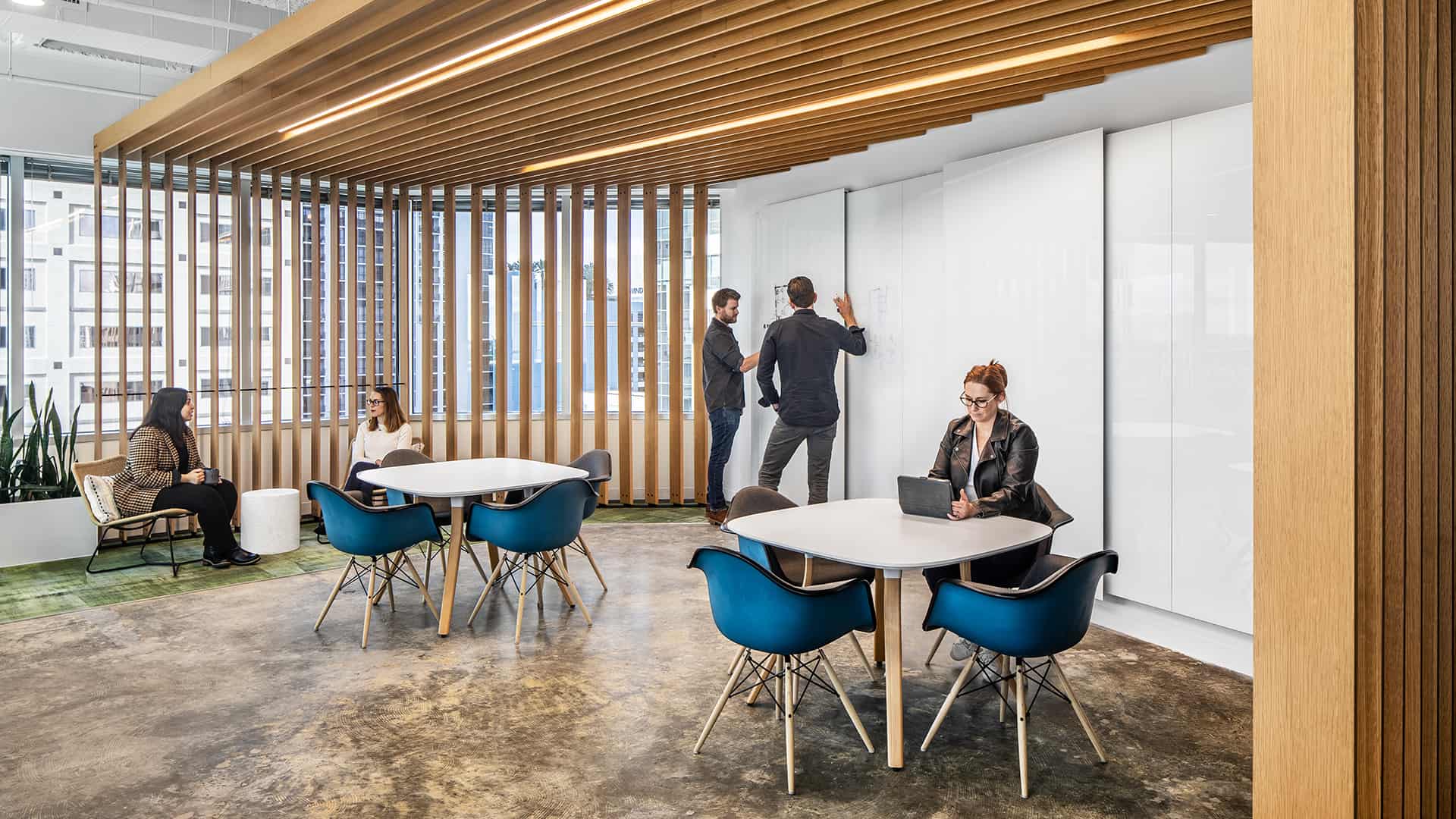In today’s evolving work landscape, the quest for an ideal workplace experience has never been more critical. Employees desire an experience that is customized to individual work styles and preferences. However, cost hurdles often impede this vision as organizations shift between remote and office-based work.
At Little, we understand these challenges and are collecting metrics and insights to understand our own employee needs, and we are sharing this valuable knowledge with our clients. Overall, we have found that proximity and availability of employees to one another provide the ultimate opportunity to shape a customizable workplace experience that drives success.
Our operating model at Little currently requests each team member to spend 32 hours in the office or on-site at a project, allowing up to eight hours of remote work per week. Research indicates this 80/20% model is the optimal ratio for facilitating a collaborative and memorable working experience, which includes personalized mentorship to uphold our values of Care, Stretch, and Spark.
Little’s 80/20 approach, with 32 hours in the office and the ability to work eight hours remotely each week, fosters collaboration and personalized mentorship, aligning with our values of Care, Stretch, and Spark.
We recognize the way we do business has fundamentally changed and continue to evolve as we adapt and relate to employees’ needs, focusing on work/life balance, human connection, and their mental health and wellness. However, providing a personalized mentorship platform must be prioritized, and while it can exist in a remote environment, we have found that our employees have a need to creatively collide with their peers to help aid innovation.
Little has always emphasized professional growth, flexibility and wellness, guided by our HEWS (Health, Energy, Water, and Social Equity) principles. Through regular internal surveys, we shape our policies and take pride in hearing that our culture is a key factor in attracting and retaining our staff.
How can your organization create opportunities by utilizing the availability and proximity concepts? Let’s explore some examples.
Availability
Our design teams encourage diversity in the types of workspaces available. A driving factor for the employees wanting to return to the office is their access to different work and social settings throughout the day. Having a range of spaces fosters a culture where creative interactions happen naturally, promoting informal mentorship across different generations.

In our recent renovation of our Durham office, we considered feedback from surveys and employee interviews to incorporate a mix of open offices, focus rooms, and comfortable seating areas. This ensures a balance that addresses the challenges of working from home.
Testing these spaces is also guiding the design of our new office outside Washington, DC. While having diverse spaces is beneficial, it’s equally important to encourage their use and facilitate team members’ availability to each other for successful outcomes. This brings us to the importance of proximity within the team.
Proximity
Proximity to the office has been a common obstacle for staff considering whether to come in, as they’re uncertain about who else will be there. The worry of showing up and finding an empty office influences their decision-making. Knowing that specific team members will be present increases participation and office presence.
To address this, Little is leveraging technology to enhance employee performance indicators and promote collaboration. This month, we’re introducing the Jumpree app from Smarten Spaces, an interactive tool offering our team the following benefits:
- Improved interface for conference room booking, including the ability to add services when booking such as drink cart or catering.
- Hybrid scheduler that provides a quick view into the in-office/out-of-office status of teammates and colleagues.
- Native Microsoft Teams app for booking spaces directly within Teams, in addition to the mobile app.
- Enabling HR to easily create short pulse surveys, like “What are your thoughts on our health insurance?” or a simple “How are you feeling today?” We can also target specific groups and ask focused questions, such as “Is there anything we can do to help?” after a hurricane.
- Visitor management features to streamline the check-in process and provide auditing of guests for IT compliance needs.
Our workplace data shows that employees value the office for building relationships with colleagues and focusing on their work. However, there’s a consistent need for a wide range of spaces and experiences to better support their work and make the office a place they genuinely want to be.

Change will keep happening, but we’re committed to using our Little team as a think tank to test ideas and ensure our clients get better results. Having employees close to each other and available is the ultimate chance to shape a customizable experience and achieve successful outcomes. So, make your office space work for you, increasing the return on investment in designing a home away from home for creative collaboration.
If you have questions or want to learn more about how we ensure our employees love working at Little now and for generations to come, engage with us.
Learn more about the working world and how its culture is being redefined. Little’s recently published Beyond Workplace III book explores the possibilities, the realities, and even the impossible.

